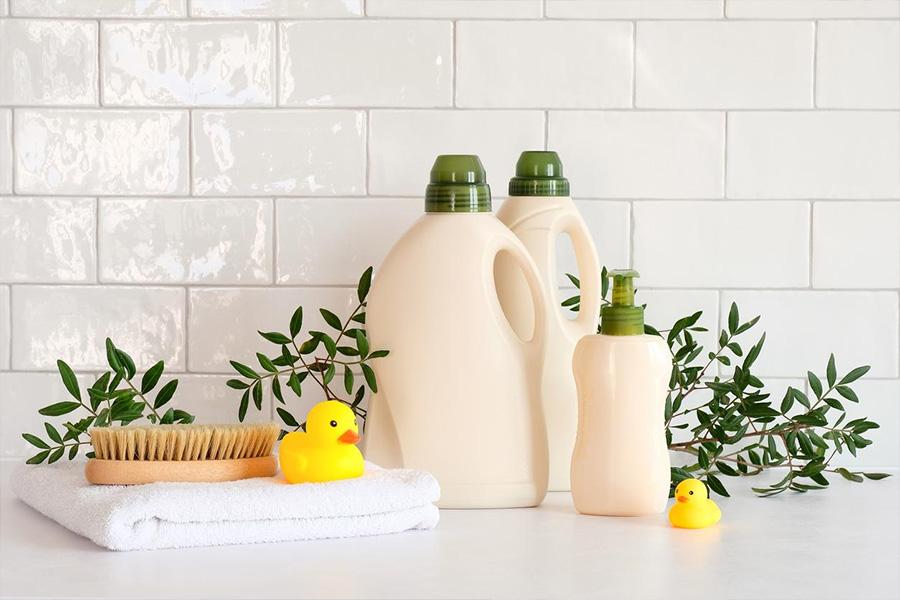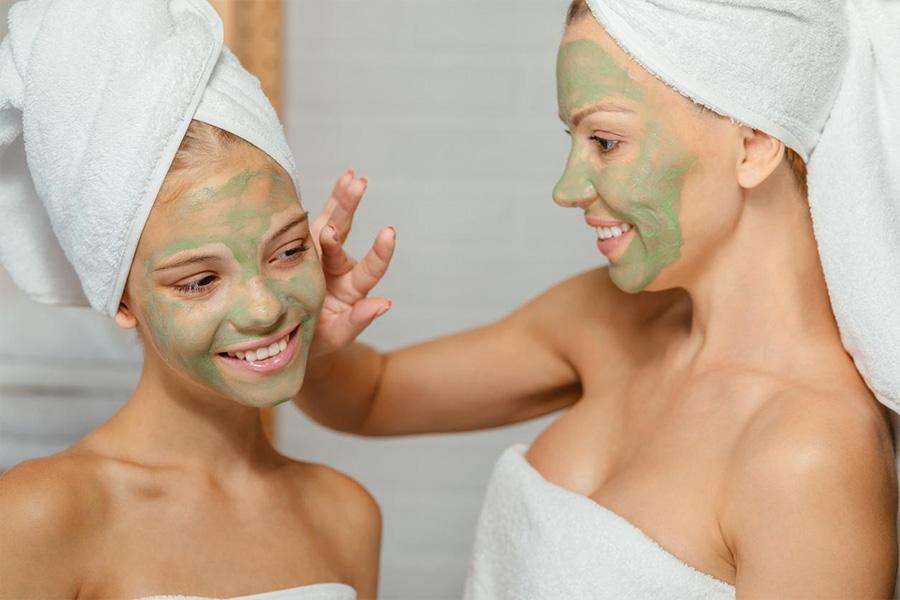The growing cost-of-living crisis has placed renewed importance on products targeted toward families. There are now new opportunities for products that can be used by the entire household, all the way from babies to parents and pets. These products are helping consumers save money without having to sacrifice safety and performance.
This article will explore how the cost-of-living crisis is affecting the beauty industry. It will analyze the global beauty market, looking at current market size, key drivers, and projected market growth. The article will then highlight the top family-friendly beauty opportunities and product ideas retailers should consider for 2023.
Table of Contents
How the cost-of-living crisis affects the beauty industry
The global beauty and personal care market
Top family-friendly beauty opportunities for 2023
Stocking family-friendly beauty products
How the cost-of-living crisis affects the beauty industry
The cost-of-living crisis has affected families worldwide, and rising inflation rates and fuel costs have depleted household budgets. In the beauty market, this has led to consumers opting for purchases that are family-friendly and can be used by the entire household. As a result, products that boast clean, all-inclusive, and money-saving credentials have become more sought after by consumers globally.
“Family-friendly” is quickly becoming the new gold standard for clean beauty as it entails providing the safest standards for the entire household. This means that more and more manufacturers will begin to offer products that allow people, regardless of age, gender, skin type, and experience level with personal care routines, to use the products with ease.
Demand for these types of money-saving products will particularly be strong among those with children as this consumer segment has become increasingly pessimistic about their finances. They will be extremely cautious about spending and will seek out affordable options.
From baby-safe skin sets to family-sized luxe products, there are a number of new product opportunities for beauty brands to tap into within the family-friendly segment to boost sales while helping support families during this precarious time.
The global beauty and personal care market
Revenue in the global beauty and personal care market amounted to US$ 528 billion in 2022. The global market is projected to grow at a compound annual growth rate (CAGR) of 4.64% over the 2022–2027 forecast period. The largest market segment is personal care, with a US$ 238 billion market volume in 2022.
Looking at a geographic comparison, the U.S. market has generated the most revenue (US$ 87 billion in 2022). In terms of distribution channels, the beauty & personal care market is expected to generate 25.4% of its total revenue through online sales by 2022.
The global beauty and personal care market has been thriving, leading it to become one of the fastest-growing consumer markets. Some of the key drivers behind this growth include the expansion of the cosmetics and skin care segments, the generational shift as young consumers enter the market, and the growing influence of social media and e-commerce — all of which have had a significant effect on consumer buying behavior related to beauty products.
Top family-friendly beauty opportunities for 2023
1. For the family: not just for babies
Baby-safe products have expanded their niche and now include formulas that are made to work for not only babies, but all members of the family, including newborns, children, pregnant women, parents, and also grandparents.
An example of this is how the U.S. celebrity beauty brand Honest Beauty created by Jessica Alba started out as a baby beauty brand, only to expand its offerings to incorporate a bath and body collection that offers value-for-money products that work for the whole family. Some of its top-selling products include the “Shampoo + Body Wash” and “Face + Body Lotion,” which are all two-in-one value packs that are designed as cost-effective options for families.
Some beauty product manufacturers have also begun to offer sunscreen products that consumers wash off with either soap or water. This takes into account some users who will not have make-up removers at their disposal, along with children and infants with thinner skin and weaker skin barriers, thus making the products more inclusive.
Beauty retailers can also add multipurpose products to their product portfolios. Examples include massage oils that can be used for babies, infants, fathers, and mothers, or as a gentle moisturizer for teens who have acne-prone skin.
2. Certified and clean: family-safe formulations
Safety will be an even more important factor that families will consider in family-friendly products going forward. Beauty retailers should cater to a wider customer base by catering to a range of skin conditions and allergies with products that are doctor-certified and offer an extra level of protection.
This practice of accommodating a wide customer group in products has been dubbed “all-clusivity.” These types of products will be in demand, particularly among parents who have newborns and young children as they will be looking for products that work across a range of skin conditions and allergies and can be safely used on the most vulnerable members of their families.
Beauty retailers can opt for natural products that are free from artificial colors, additives, alcohol, artificial fragrances, and parabens, and choose to only stock products made from high-quality, lab-tested ingredients. The catalog could include family-safe two-in-one hair and body washes that can be used by babies and are both pregnancy-safe and breastfeeding-safe.
Products that are organically grown or made from naturally derived ingredients will also be popular, and retailers can cater to this market by stocking products that are dermatologist- and pediatrician-tested, with formulations that are safe for use on babies, toddlers, as well as parents.
3. Modern family: child-friendly luxe rebranding
Family-friendly brands are moving away from the kitsch family imagery and inexpensive-looking packaging that has been common in the category. They are now choosing packaging that has a luxe aesthetic, which allows consumers to be proud to showcase their beauty shelves in person or on social media, regardless of age.
Demand for family-friendly products has been rising, and brands are starting to rethink their branding and packaging strategies so that they can capture larger, more age-inclusive customer bases. Catering to this wider consumer category means that retailers would have to stock products with packaging that has a minimalist aesthetic so as to have the widest appeal. This would include recyclable glass that gives off a clean and elegant aesthetic.
Luxe packaging does not have to translate to luxe pricing, particularly during these times when financial anxiety is at a high. Minimalist packaging often signals luxe to consumers, but it can also be affordable and easy to manufacture, making it suitable for lower-priced products. Retailers can also go for products that are scented and wellness-geared as this will also give off the luxe feel. Phyto and aromatherapeutic scents can be safely used for family-friendly products.
4. Family-sized: made to last

As brands will now be stocking products that are used by the entire household, they will also need to accommodate these families by offering formats that last longer or touch-free formats that make it easier and safer to share with multiple users.
Super-sized products have become a popular option among consumers sourcing family-friendly items, as these offer more product volume at less cost. Environmentally, this is also highly efficient because super-sized products use less packaging overall.
Retailers can add XL-sized refillable packs to their product catalogs. These can be offered for newborn- and family-friendly two-in-one products for hair and body or hand soap refills with 1-liter volumes.
Aside from jumbo-sized products and refillables, beauty retailers can also introduce other formats that are cost-effective, helping users get more economical use out of their products. This includes zero-waste products such as waterless shampoos and conditioner concentrates that can last for more than 30 washes. These products can be sold alongside tube keys that are designed to ration the amount of product used and thus get more use out of each tube.
5. Furry friends included: for humans and pets
Pets have always been key members of the family unit, and brands are starting to cater to this more by extending beauty products to include them. More brands are starting to offer human- and pet-friendly formulas that appeal to owners who are looking to pamper their pets in a cost-effective way.
The cost-of-living crisis has made it essential for pet owners to save on salon costs for their pets, and a growing number of pet owners are happy to wash and groom their pets at home. Pets do not require washing as often as humans do, so offering products that pet owners can not only use on themselves but also on their pets will help them make significant cost-savings.
Retailers can offer aromatherapy-infused fur washes that can be used on all common pets, while also doubling up as hand wash for humans who have sensitive skin. Ingredients such as tea tree leaf, lemon rind, and spearmint leaf will offer both cleaning and calming benefits to humans and pets alike.
Other product options include hair products that can be used on humans and horses, such as shampoos and conditioners that have gentle lathers and help to deliver a smooth and shiny mane for horses, as well as healthy hair for humans.
6. Future-proofing for next-gen families

More brands are starting to realize that “family-friendly” formulas should also go hand in hand with formulas that are planet-friendly and pregnancy-safe, so as to ensure that future generations are also able to thrive.
Parents-to-be will be particularly looking for family-safe products, so beauty retailers should expand their product offerings to cater to pregnant people and parents of newborns as these consumer groups have different needs compared to parents with young children. Retailers can offer multipurpose healing balms and moisturizers that are safe for pregnancy, breastfeeding, and also for use on babies.
Future-proofing is also related to eco-friendliness, and this will also be top on the priority list for many consumers, just as much as products having family-friendly credentials and budget-friendly prices. Consumers will seek out non-GMO products made from organically grown ingredients and sourced through fair trade.
To cater to this market, retailers can do away with all secondary packaging and opt for biodegradable formulas that help businesses reduce their carbon footprints and that of their products. This will be done so that consumers not only get family-friendly but also planet-friendly products that protect the environment that future generations will live in.
Stocking family-friendly beauty products
Retailers should not neglect aesthetics as they stock for 2023. While family-friendly and budget-friendly products tend to be utilitarian or garish, beauty brands can transform this perception by using affordable and sustainable packaging that still gives off a luxe feel.
Retailers should also embed new-gen inclusivity into their product portfolios. For brands to truly be cost-effective, they need to ensure that family-friendly products actually have universal utility across all ages, genders, skin types, allergies, as well as disabilities.
Finally, retailers should tap into practical concerns that consumers have. Concerns around cleanliness, cost-saving, and longevity will continue to be top-of-mind priorities for many consumers during the cost-of-living crisis. Beauty retailers should clearly communicate the cost-savings their products deliver when consumers opt for the more family-friendly XL formats.




